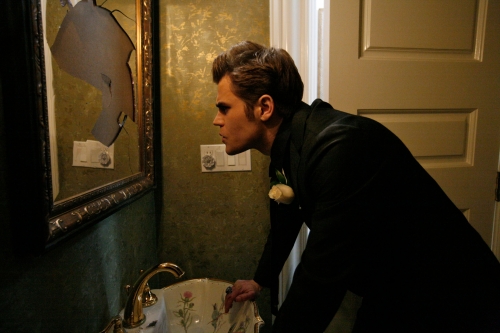Quote from: Horrorfiend on Sat 13/07/2013 21:02:16
I wish I could help out.
Selmiak is right: you can! What can you do? Scripting? Music? Sound effects? etc.
This section allows you to view all posts made by this member. Note that you can only see posts made in areas you currently have access to.
Show posts MenuQuote from: Horrorfiend on Sat 13/07/2013 21:02:16
I wish I could help out.


Quote from: Ryan Timothy on Sat 13/07/2013 17:03:12
I recommend changing the screenshot.

Quote from: Ryan Timothy on Sat 13/07/2013 17:03:12
What is the scanlines.txt for, and with that question, why do you output it as a txt with raw ints instead of a binary file? That way the player is not wondering what this text file is and if they should read it.

Quote from: Horrorfiend on Sat 13/07/2013 01:00:05It's not compatible with animated backgrounds. Animated backgrounds are evil anyway!
I wonder if it works well with animated background or water


Quote from: Kitai on Thu 11/07/2013 12:47:31
But where is the mirror on the screenshot you posted? Is it the golden stone? If so, what does it reflect?

Quote from: Ghost on Fri 12/07/2013 00:12:54
Well done, Monsieur; I never thought I'd need mirrors. Now I will put them everywhere!
Quote from: Phemar on Thu 04/07/2013 11:00:45
Nice idea. Why is the file a .0 extension and not a .scm?

Quote from: Phemar on Thu 04/07/2013 11:00:45
Also, there's a typo in 'int GetSlot', you wrote 'mabient' instead of 'ambient'.
Quote from: Phemar on Thu 04/07/2013 11:00:45Oh well, I spelt it with an "e" almost everywhere, so I'll live with it. Blame the English language, that puts an "a" to "ambiance", but an "e" to "ambient". Makes no sense!!!111!!!11
And ambient is spelled with an 'e', not an 'a'


Quote
IMPORTANT NOTE :
- This module was created before late_repeatedly_execute_always was introduced
- If you replace repeatedly_execute_always with late_repeatedly_execute_always it should procude better results (no latency in character frame mirrored)


//not the actual code in the module
DynamicSprite* s sprite= DynamicSprite.CreateFromExistingSprite(something.Graphic);
int width=s.Width;
int height=s.Height;
width = Game.SpriteWidth[something.Graphic];
height = Game.SpriteHeight[something.Graphic];
Quote from: Sunny Penguin on Wed 10/07/2013 18:47:47At least I know when to use properly "it's" and "its"!
You wouldn't know intelligence if it came around to your house for dinner wearing a name tag, whispered it's name in your ear and smacked you across the face with an IQ test!
y_in_char = y_in_char +perspective_correction_y;y_in_char = y_in_char +2*perspective_correction_y;Quote from: Stupot+ on Tue 09/07/2013 23:00:25
My smartphone is more expensive than your smartphone :p
Quote from: Kitai on Mon 08/07/2013 17:41:11
I think M. OUXX had no question: he just points out that the manual does not (but should) say that whenever you pass the coordinates of a transparent pixel to GetPixel, it returns the value -1.
Once the user learns it, (s)he no longer wonders what value (naively the pink value) he should check for in order to know whether the pixel he's looking at is transparent or not.
Quote from: Khris on Mon 08/07/2013 23:30:36
The perspective correction should alter that fixed offset, but only does so on the x-axis.
Quote from: Crimson Wizard on Mon 08/07/2013 23:22:16
Earlier you said:QuoteBut I can't see why y_on_screen should depend on perspective_correction_y at all. There's no operation that would refer these two variables at once.
No matter how perspective_correction_y varies, the final value of y_on_screen stays the same
Quote from: Iceboty V7000a on Mon 08/07/2013 17:31:38They're calculated once before the loop.
Where are the codes that set/modify the values of perspective_correction_x/y?
They're just used in the attached script but there is no indication on how they're changed.
Quote from: Crimson Wizard on Mon 08/07/2013 17:45:10The principle of the algorithm is that I start from the pixel on-screen, and calculate what pixel in the character sprite it should display. Therefore, x_on_screen (resp. y_on_screen) must always be x+i (resp. y+j).
shouldn't you be setting x_on_screen instead of x_in_char?
Quote from: Eric on Mon 08/07/2013 01:43:26
I made a guess that a Monsieur wouldn't use the American Google, and turns out I was right!

int color_char;
int color_mirror;
DrawingSurface* ds_mirror = data[mir_index].obj_spr.GetDrawingSurface();
int i=0; int j=0;
while (j<data[mir_index].height) //iterate on every pixel row in the mirror object
{
i=0;
while (i<data[mir_index].width) //iterate on every pixel column in the mirror object
{
color_mirror = ds_mirror.GetPixel(i, j);
if (color_mirror!=data[mir_index].TRANSP_COLOR)
{
/*
#define x_on_screen x+i
#define y_on_screen y+j
#define x_correction (-data[mir_index].x_offset)
#define y_correction (-data[mir_index].y_offset)
*/
int x_on_screen = x+i;
int y_on_screen = y+j;
x_in_char = x_on_screen-frameData.x;
y_in_char = y_on_screen-frameData.y;
if (frameData.flipped)
x_in_char = frameData.w - x_in_char;
x_in_char = x_in_char /*+x_correction*/ +perspective_correction_x;
y_in_char = y_in_char /*+y_correction*/ +perspective_correction_y/*+ofs*/;
//Status.Text=String.Format("persp=%d",perspective_correction_y);//DEBUG
if ( x_in_char>=0 && x_in_char<frameData.w
&& y_in_char>=0 && y_in_char<frameData.h)
{
color_char = char_ds.GetPixel(x_in_char, y_in_char);
if ( color_char!=frameData.TRANSP_COLOR )
{
ds.DrawingColor = color_char;
ds.DrawPixel(x_on_screen, y_on_screen);
}
}
}
i++;
}
j++;
}

By continuing to use this site you agree to the use of cookies. Please visit this page to see exactly how we use these.
Page created in 0.637 seconds with 21 queries.